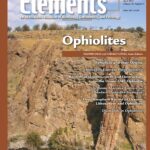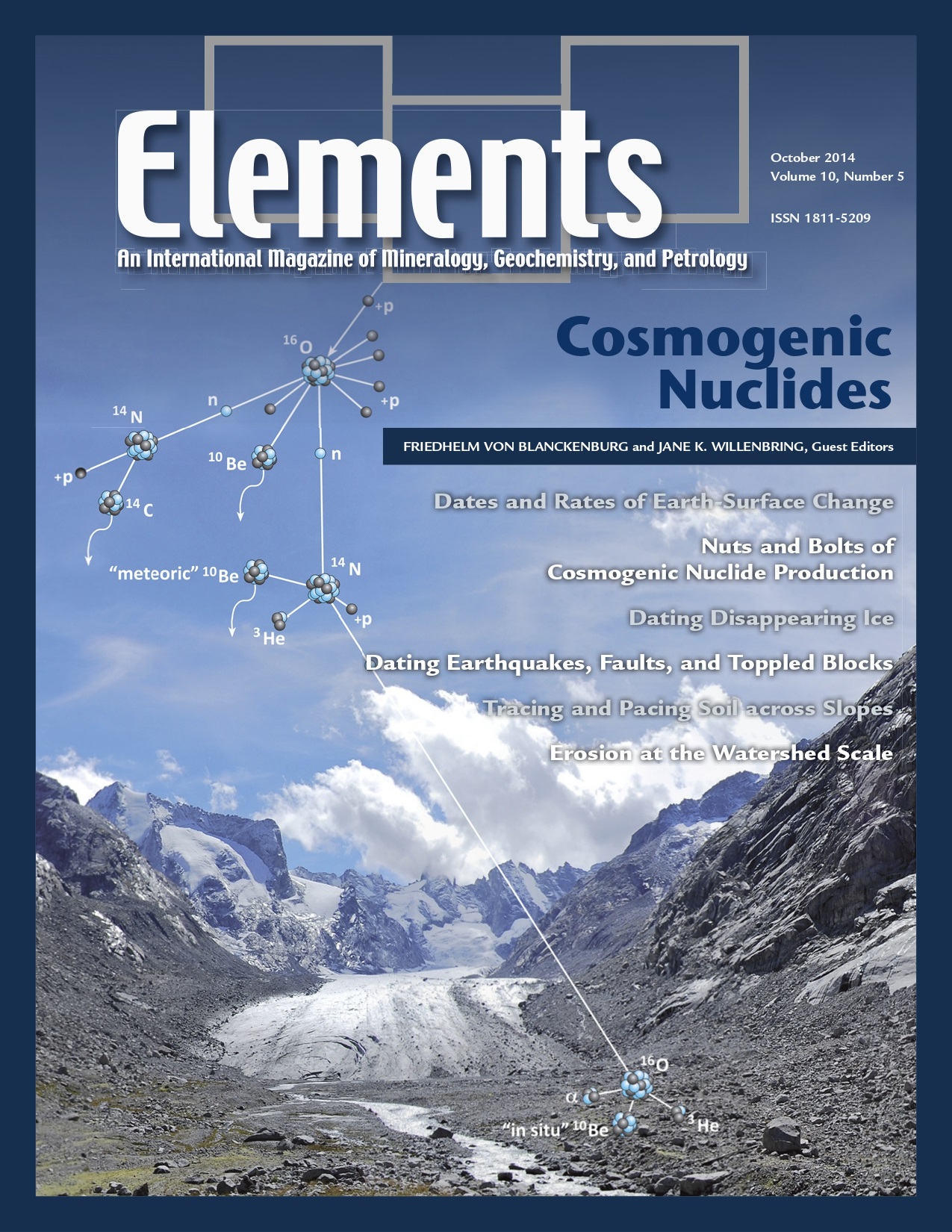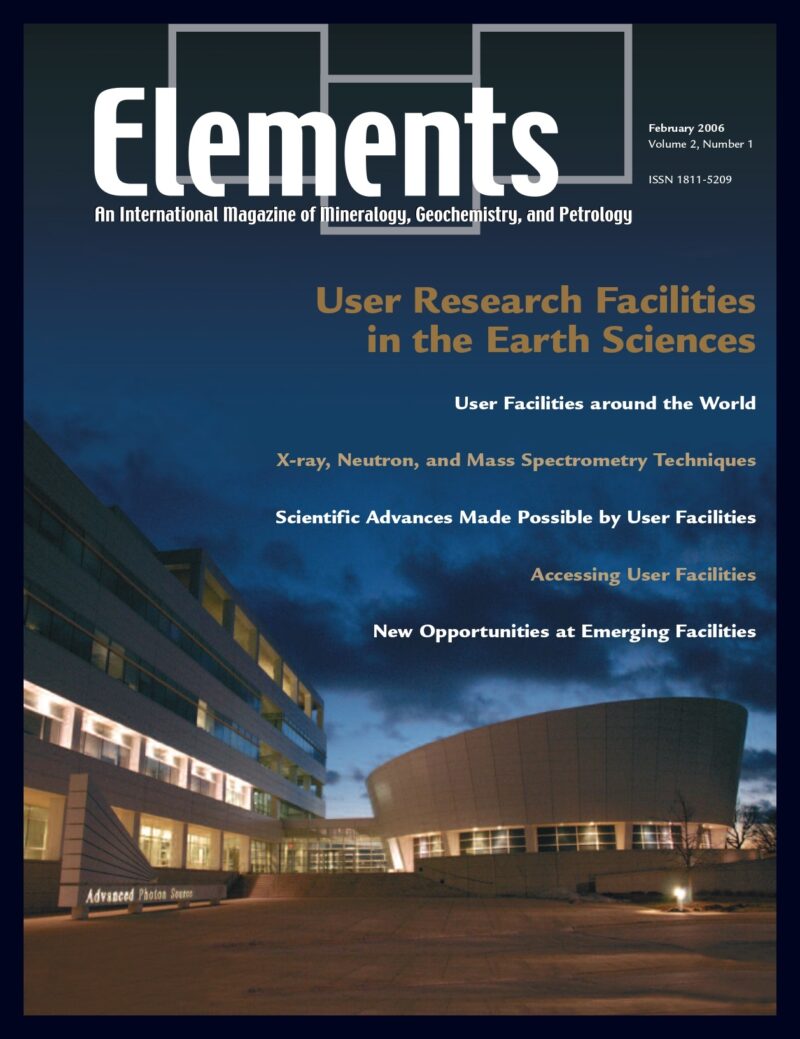
Ophiolites, April 2014, Vol. 10, No. 2
June 28, 2024
Arc Magmatic Tempos, April 2015, Vol. 11, No. 2
June 28, 2024Cosmogenic Nuclides, October 2014, Vol. 10, No. 5
$20.00
The Earth’s surface is the thin, ever-changing layer on which we live. The geochemical study of cosmogenic nuclides is currently revolutionizing our understanding of the processes that shape this surface layer by providing their rates and dates.
Cosmogenic Nuclides
October 2014, Vol. 10, No. 5
The Earth’s surface is the thin, ever-changing layer on which we live. The geochemical study of cosmogenic nuclides is currently revolutionizing our understanding of the processes that shape this surface layer by providing their rates and dates. The underlying physical principles are simple and elegant: when rock or soil moves into the shallow zone of surface irradiation, cosmic rays interact with elements in minerals to produce very rare isotopes—the radioactive nuclides 10Be, 14C, 26Al, 36Cl, and 53Mn and the rare gases 3He and 21Ne. At this exact moment, the nuclide clock begins to tick. These nuclides can reveal the times when a river cuts down through a mountain range, when a glacial moraine was deposited, or when a river or marine terrace was abandoned. Cosmogenic nuclides also serve to measure erosion rates directly: the longer a soil resides at the surface before being eroded, the more nuclides accumulate. Hence, these nuclides provide rates of erosion, from the scale of a pebble to as large as an entire river basin.
Why You’ll Love Elements Magazine:
- Expert Contributors: Articles written by renowned researchers in the field of geoscience.
- Engaging Content: Join a community of readers who are passionate about Elements.
- Exceptional Quality: Each issue is printed on high-quality paper with stunning visuals and detailed illustrations that bring complex scientific concepts to life.
Order your copy of the October 2014 issue of Elements magazine today and delve into cosmogenic nuclides.
Related products
-
Early Earth, August 2006, Vol. 2, No. 4
$20.00The earliest Earth was a strange inhospitable world, yet transitions occurred culminating in the evolution of life within the first billion years. The preservation of a sparse and ambiguous rock record has encouraged debate.
-
Nanogeoscience, December 2008, Vol. 4, No. 6
$20.00At first glance, nano and Earth seem about as far apart as one can imagine. Nanogeoscience seems to be a word connecting opposites.
-
User Research Facilities In The Earth Sciences, February 2006, Vol. 2, No. 1
$20.00Earth scientists rely on effective access to user research facilities that provide state-of-the-art analytical instrumentation. This thematic issue focuses on some of these facilities and how to use them.




